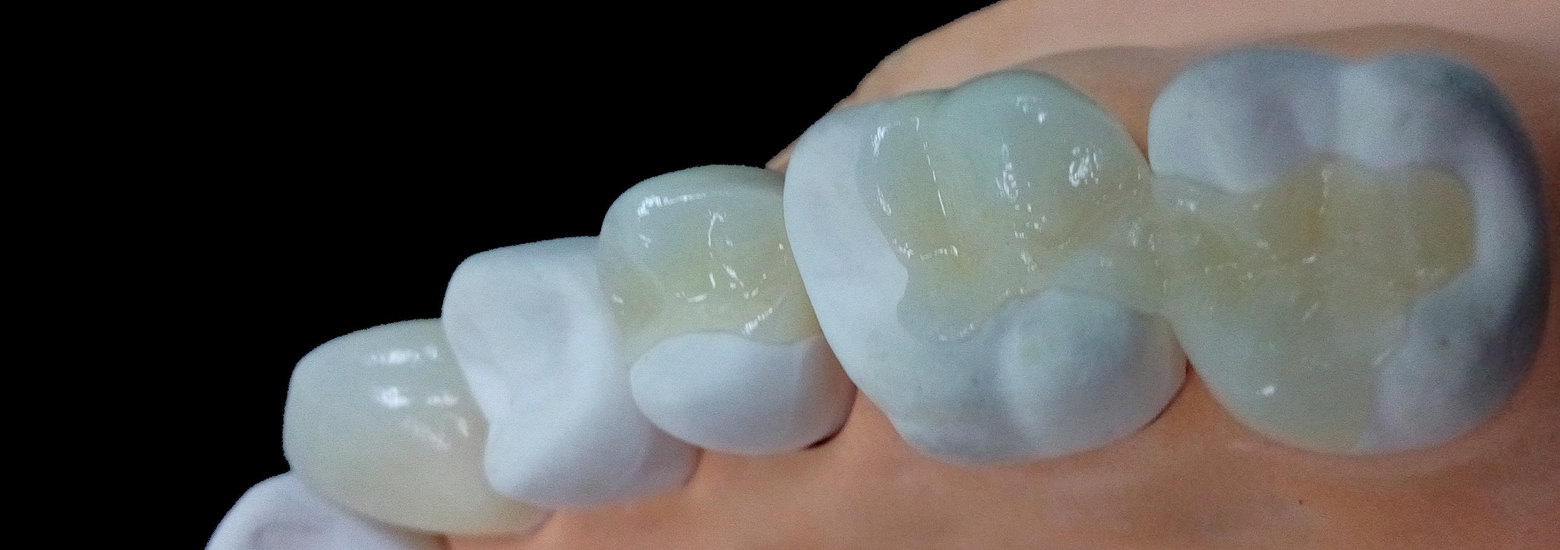
Postavljanje zubnih plombi je jedan on najčešćih, rutinskih zahvata u svakoj ordinaciji. Plombe za zube uglavnom dobijaju pacijenti koji nedovoljno često posećuju zubara i time daju vremena karijesu da se proširi. Ipak, ako je pacijent došao pre nego što je karijes zahvatio većinu zuba, primenom kompozitnih i keramičkih plombi moguće je vratiti celokupnu strukturnu snagu zubu, kao i postići izgled koji ne odstupa od izgleda zdravog zuba, i to do najsitnijih detalja.
Kompozitne plombe sajstoje se u od polimera, kvarca i keramike u različitim proporcijama. Kada sadrže veliki procenat keramike, plombe izgledaju i ostavljaju sličan osećaj kao kada pacijent nosi keramičku krunicu. Amalgamske plombe se više ne koriste, a prelazak na kompozitne i keramičke plombe veoma je značajan za pacijente, jer sada možemo da zub izradimo u potpunosti čak i kada je veoma malo zdravog zuba ostalo kao potpora za plombu. Posebno se precizno modelira grizna površina, koja sadrži kvržice i fisure poput zdravog zuba, što čini plombu neprepoznatljivom i dozovoljava da zagrižaj bude prirodan, dok su stare ravne plombe otežavale žvakanje.
Jedan od razloga zbog kojih su zubi pod kompozitnim i keramičkim plombama u toj meri slični zdravim zubima jeste način njihov izrade, jer se one ne pune odozgo na gore već su sačinjene od slojeva, od centra ka ivicama (kao kod prirodnog zuba), što ih čini strukturno jačim i omogućava da se svetlost prelama na isti način kao kod prirodnog zuba, dajući im isti izgled. Zahvaljujući svom hemijskom sastavu, kompozitne i keramičke plombe potpuno se vezuju za zub, što onemogućava ispadanje i čini ih čvršćim.
Pod keramičkim plombama podrazmevamo keramičke inleje (rešenje slično kompozitnoj plombi, ali kvalitetnije), keramičke onleje (keramičke plombe koje uključuju i vrh zuba), kao i delimične tj. parcijalne zubne krunice. Razlika između onleja i parcijalne krunice je to što krunica uvek podrazumeva i barem jednu bočnu stranu a onlej ne. Keramičke plombe izrađuju se za nekoliko minuta u CEREC mašini i predstavljaju najbolje rešenje koje savremena stomatologija poznaje kada je reč o restauraciji zuba. Keramičke plombe su ubedljivo najbolje plombe za zube, mada ako postoji sumnja da će se karijes ponovo pojaviti, bolje je postaviti kompozitnu plombu, jer je nju lakše ukloniti radi kasnijih zahvata.
Modelovanje plombi u 3D softveru
Kompozitne plombe za zube su pouzdane i povoljne, ali one poseduju gustinu plastelina i postaju tvrde tek posle stvrdnjavanja lampom. Sve kompozitne plombe vremenom popuštaju (jer se skupljaju), pucaju i menjaju boju, pa tako što je plomba veća to je njen vek kraći. Budući da je keramička plomba nekompozitna, tj. da se dobija isecanjem homogenog komada keramike, mogućnost smanjivanja ne postoji. Na prvi pogled, bela plomba ima prednost u vidu mekoće, što omogućava da savršeno da popuni svaki kavitet, ali pošto je keramička plomba napravljena u CEREC mašini na osnovu kompjuterskog skeniranja zuba, sada i čvrsta plomba može savršeno pokriti kavitet, ostavljajući manje od 0.1mm između zuba i plombe, uz popunjavanje međuprostora cementiranjem.
Ako poredimo tri tipa plombi možemo reći da su najbolje plombe za zube keramičke plombe, koje se koriste na mestima na kojima se pretpostavlja da će trajno ostati, kao kada je zub negde okrnjen. Kompozitne plobme su najuniverzalnije, i koriste se u 95% slučajeva, dok se amalgamske plombe sve ređe koriste, iako više nisu tamne boje kao nekada.
